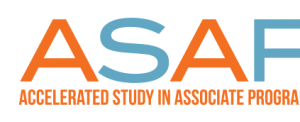#FairFares is a victory—But it’s not the end of this fight
- Olivia Brady
- Jun 27, 2018
- 4 min read
Despite the fact that New York City is one of the wealthiest cities in the world, over 2,800,000 adults and children fall below the federal poverty line. 58% of this population is dependent upon public transportation in order to get to work, school, medical appointments, and other responsibilities. When the round-trip cost of a subway or bus is ride is $5.50 and a 30 day unlimited pass is $131, low-income New Yorkers are being forced to choose between transportation and meals and other necessities. Other cities in the United States offer discounts on public transportation for their low-income residents, but NYC didn’t—until about two weeks ago when #FairFares was approved. With the work of Riders Alliance and the Community Service Society, City Council Speaker Corey Johnson and Mayor Bill DeBlasio agreed to set aside $106 million in the FY19 budget to cover the cost of reduced-fare Metro-Cards for adults living below the poverty line. The policy, which is set to begin in January 2019, will help over 800,000 low-income New Yorkers. While this policy is a huge leap forward in closing the gap between rich and poor in NYC, it is not the end of this fight.
On Tuesday June 12, 2018, I was able to attend a rally celebrating the passage of #FairFares for low-income New Yorkers. The rally featured prominent activists and local government officials who worked on the campaign for nearly two years. These officials included City Council Speaker Corey Johnson, and none other than Mayor DeBlasio himself. The main activist groups responsible for the grassroots organization towards #FairFares were Riders Alliance and the Community Service Society, although the coalition was made up of over 50 partners. Again, this policy marks a huge victory for New Yorkers, but it highlights even more central issues within the MTA and NYC in general. MTA policy typically reveals a fundamental disconnect between communities and politicians, but the #FairFares rally in particular made this disconnect glaringly obvious.
First of all, the rally—which celebrated an MTA policy victory—took place in Fulton Center—a physical embodiment of the misuse of MTA funds. Fulton Center was completed in 2014 and cost a grand total of $1.4 billion dollars. $130 million of that funding came directly from the MTA budget. Fulton Center is beautiful, the station is accessible and easy to navigate, but it is unnecessarily grandiose. At a time when the MTA is over $35 billion dollars in debt, when its infrastructure is outdated and crumbling, its fare prices are rising, and its service is becoming increasingly limited, to use $130 million dollars of its budget on one station is wasteful. Fulton Center represents both Governor Cuomo’s and Mayor DeBlasio’s prioritization of good publicity and re-election to the genuine needs of the communities of which they are supposed to serve. The fact that a policy which meets a major need for low-income New Yorkers was held in this station highlights the gross disconnect between communities and their elected officials.
Moreover, the media’s treatment of Mayor DeBlasio compared to their treatment of the city council members and activist leaders at the rally even further demonstrates this disconnect between government and community. All Mayor DeBlasio did to approve #FairFares was agree to it. 47 out of the 51 city council members supported #FairFares before this year, but Mayor DeBlasio ignored it for two years. This was a policy he could have approved as soon as it was brought to his attention, yet he fought against those advocating for it, until the political pressure was great enough to force him to agree. Speaker Corey Johnson had been fighting for this policy since the start of the campaign, and Riders Alliance and Community Service Society did all of the heavy-lifting in terms of garnering support and gathering research. The Community Service Society released ground-breaking research in April of 2016 which proved the need for #FairFares and showed that there was funding for it. Alongside Riders Alliance and 50 other organization, these community activists lead the grassroots fight for #FairFares. Yet at the rally, Mayor DeBlasio was given credit for this policy, and when he left early the media did as well. This left little to no coverage for the voices of the real people who dedicated two years of their lives fighting for this policy.
None of this is to say that I am not excited that #FairFares will be a reality for 800,000 people starting in January. In no way am I criticizing the policy or those who tirelessly pursued it for no other reason than to improve their neighbor’s lives. Equitable access to transportation is the foundation of any thriving city, and #FairFares will revolutionize many people’s lives in deeply meaningful ways. What I am criticizing, however, is the relationship between leading government officials and community organizers. Change doesn’t begin in Mayor DeBlasio’s office. It happens when people stand on the street and collect petitions. It happens when New Yorkers gather together for Riders Alliance meetings after work. It happens when regular people ban together to voice their needs and to advocate for their communities.
Here’s to hoping the momentum behind #FairFares continues and keeps proving that grassroots activism works. Right now, we can’t rely on our politicians to make policy that works for us—we have to fight for it ourselves. #FairFares shines light on deep-seated institutional barriers between communities and government, but it also provides a glimmer of hope for the future of this city.
Watch the #FairFares Rally here!
Photos taken by Olivia Brady


























Comments